Themed collection In memory of Paul O’Brien

Synthetic routes to mercury chalcogenide quantum dots
In this report, we explore the synthetic chemistry behind the development of mercury chalcogenide quantum dots and highlight some key optical properties. Graphical abstract shows a HgTe quantum dots. Reproduced from M. Green, G. Wakefield and P. J. Dobson, J. Mater. Chem., 2003, 13, 1076 with permission from The Royal Society of Chemistry.
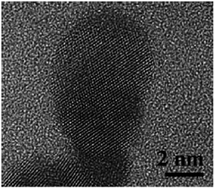
J. Mater. Chem. C, 2018,6, 5097-5112
https://doi.org/10.1039/C8TC00910D
The single molecular precursor approach to metal telluride thin films: imino-bis(diisopropylphosphine tellurides) as examples
Pure thin films of metal tellurides, such as CdTe, Sb2Te3 and In2Te3, can be generated from complexes of the [TePri2PNPPri2Te]− ligand by using the technique of aerosol-assisted chemical vapour deposition.
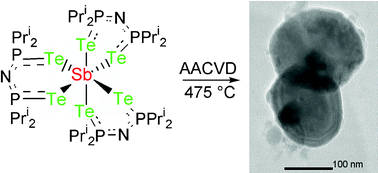
Chem. Soc. Rev., 2007,36, 1622-1631
https://doi.org/10.1039/B605535B
An atom efficient, single-source precursor route to plasmonic CuS nanocrystals
The synthesis of colloidal semiconductor nanocrystals (NCs) from single-source precursors offers simplified manufacturing processes at the cost of reduced atom efficiency.

Nanoscale Adv., 2019,1, 522-526
https://doi.org/10.1039/C8NA00325D
Black phosphorus with near-superhydrophobic properties and long-term stability in aqueous media
We present the use of a polymeric stabilizer which stymies the degradation of black phosphorus nanosheets in aqueous media as well as imparting superhydrophobic properties to immobilised nanosheets.
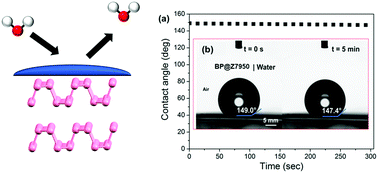
Chem. Commun., 2018,54, 3831-3834
https://doi.org/10.1039/C8CC01789A
SPIONs for cell labelling and tracking using MRI: magnetite or maghemite?
SPIONs consisting predominantly of magnetite or maghemite display distinct chemical stability in solution but equivalent imaging properties when in cells.
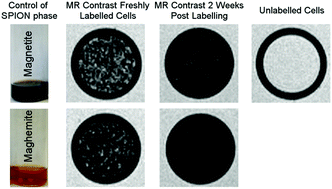
Biomater. Sci., 2018,6, 101-106
https://doi.org/10.1039/C7BM00515F
Functionality preservation with enhanced mechanical integrity in the nanocomposites of the metal–organic framework, ZIF-8, with BN nanosheets
It has been possible to bestow significantly improved mechanical properties on a porous MOF by incorporating BN nanosheets.
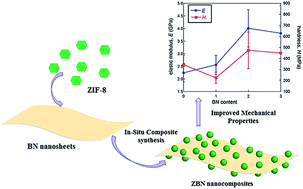
Mater. Horiz., 2014,1, 513-517
https://doi.org/10.1039/C4MH00065J
Anisotropy of CoII transferred to the Cr7Co polymetallic cluster via strong exchange interactions
In the Cr7Co model-system the anisotropy of CoII is effectively transferred to the whole cluster through strong and anisotropic exchange interactions.
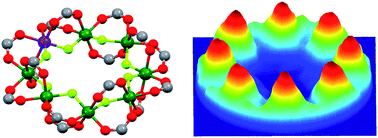
Chem. Sci., 2018,9, 3555-3562
https://doi.org/10.1039/C8SC00163D
The chemical vapor deposition of Cu2ZnSnS4 thin films
Cu2ZnSnS4 (CZTS) is a potentially important solar cell material. We report the first chemical vapor deposition (CVD) of Cu2ZnSnS4 thin films using diethyldithiocarbamato complexes of copper, zinc and tin.
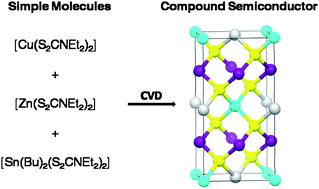
Chem. Sci., 2011,2, 1170-1172
https://doi.org/10.1039/C0SC00538J
Full compositional control of PbSxSe1−x thin films by the use of acylchalcogourato lead(II) complexes as precursors for AACVD
Selenium and sulfur derivatives of lead(II) acylchalcogourato complexes have been used to deposit PbSxSe1−x thin films by AACVD.
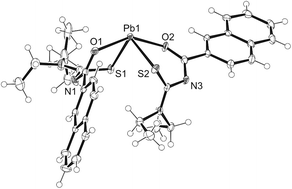
Dalton Trans., 2018,47, 16938-16943
https://doi.org/10.1039/C8DT03443E
Exploring the effect of the cyclometallating ligand in 2-(pyridine-2-yl)benzo[d]thiazole-containing iridium(III) complexes for stable light-emitting electrochemical cells
LECs with [Ir(tppy)2(btzpy)][PF6] (tppy = 2-(3-(tert-butyl)phenyl)pyridine, btzpy = 2-(pyridine-2-yl)benzo[d]thiazole) in the active layer exhibit pure red emission and are very stable over 5 days of continuous operation.
![Graphical abstract: Exploring the effect of the cyclometallating ligand in 2-(pyridine-2-yl)benzo[d]thiazole-containing iridium(iii) complexes for stable light-emitting electrochemical cells](/en/Image/Get?imageInfo.ImageType=GA&imageInfo.ImageIdentifier.ManuscriptID=C8TC04727H&imageInfo.ImageIdentifier.Year=2018)
J. Mater. Chem. C, 2018,6, 12679-12688
https://doi.org/10.1039/C8TC04727H
Defect formation in In2O3 and SnO2: a new atomistic approach based on accurate lattice energies
A new consistent interatomic force field for In2O3 and SnO2.
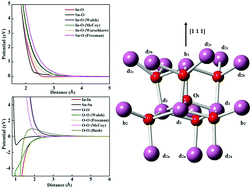
J. Mater. Chem. C, 2018,6, 12386-12395
https://doi.org/10.1039/C8TC04760J
Direct and continuous hydrothermal flow synthesis of thermochromic phase pure monoclinic VO2 nanoparticles
The first direct synthesis of pure thermochromic VO2(M) nanoparticles with particle sizes below 50 nm by continuous hydrothermal flow synthesis (CHFS).
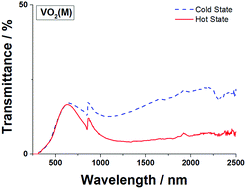
J. Mater. Chem. C, 2018,6, 11731-11739
https://doi.org/10.1039/C8TC00859K
Intermolecular interactions in molecular crystals and their effect on thermally activated delayed fluorescence of helicene-based emitters
In crystals of donor–acceptor helicene molecules, thermally activated delayed fluorescence (TADF) is strongly enhanced by the presence of occluded hexane molecules.
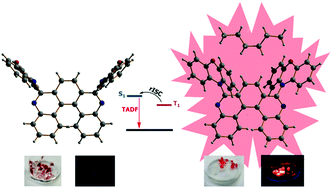
J. Mater. Chem. C, 2018,6, 10557-10568
https://doi.org/10.1039/C8TC03390K
Enhanced thermoelectric performance of Sn-doped Cu3SbS4
Enhanced thermoelectric performance of Cu3SbS4 with fine microstructure and optimized carrier concentration by Sn-doping.
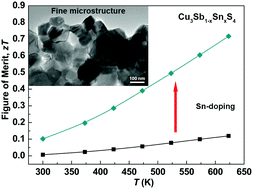
J. Mater. Chem. C, 2018,6, 8546-8552
https://doi.org/10.1039/C8TC02481B
Bis(selenobenzoato)dibutyltin(IV) as a single source precursor for the synthesis of SnSe nanosheets and their photo-electrochemical study for water splitting
A new organo tin complex has been synthesized and used as a single source precursor for the synthesis of tin selenide nanosheets and deposition of thin films.

Dalton Trans., 2018,47, 5465-5473
https://doi.org/10.1039/C8DT00285A
Shining light on the antenna chromophore in lanthanide based dyes
Lanthanide based molecular probes for bioimaging rely on the antenna effect; here we start unravelling the details of sensitized lanthanide luminescence.
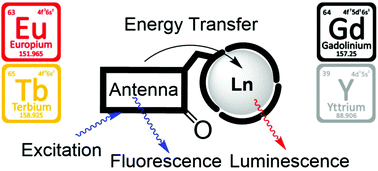
Dalton Trans., 2018,47, 4794-4803
https://doi.org/10.1039/C7DT04788F
NASICON LiM2(PO4)3 electrolyte (M = Zr) and electrode (M = Ti) materials for all solid-state Li-ion batteries with high total conductivity and low interfacial resistance
All solid-state batteries based on NASICON-type LiM2(PO4)3 electrolyte phases are highly promising owing to their high ionic conductivities and chemical stabilities.
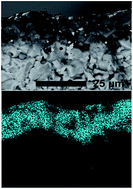
J. Mater. Chem. A, 2018,6, 5296-5303
https://doi.org/10.1039/C7TA08715B
Influence of lanthanides on spin-relaxation and spin-structure in a family of Fe7Ln4 single molecule magnets
A family of undecanuclear Fe–Ln clusters, comprising butterfly motifs, was explored and two are found to behave as single molecule magnets.
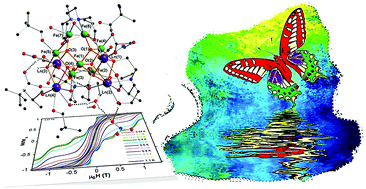
J. Mater. Chem. C, 2018,6, 2862-2872
https://doi.org/10.1039/C8TC00322J
New insights into the nature of semi-soft elasticity and “mechanical-Fréedericksz transitions” in liquid crystal elastomers
Previously unseen coincidence of a semi-soft elastic-like load curve with a “mechanical-Fréedericksz transition” and negative liquid crystal order parameter (S).
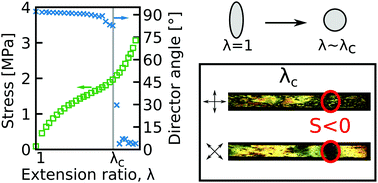
Soft Matter, 2018,14, 1301-1310
https://doi.org/10.1039/C7SM02107K
The role of fullerenes in the environmental stability of polymer:fullerene solar cells
Environmental stability is a common challenge for the commercialisation of low cost, encapsulation-free organic opto-electronic devices.
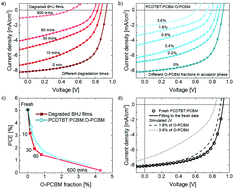
Energy Environ. Sci., 2018,11, 417-428
https://doi.org/10.1039/C7EE02983G
A solution-processable dissymmetric porous organic cage
A dissymmetric, soluble, porous organic cage from a low-cost racemic precursor.

Mol. Syst. Des. Eng., 2018,3, 223-227
https://doi.org/10.1039/C7ME00090A
Insights into the increased degradation rate of CH3NH3PbI3 solar cells in combined water and O2 environments
Halide perovskites offer low cost and high efficiency solar cell materials but serious issues related to air and moisture stability remain.
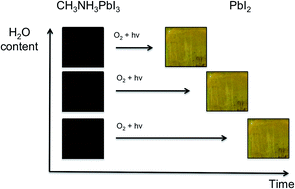
J. Mater. Chem. A, 2017,5, 25469-25475
https://doi.org/10.1039/C7TA06841G
Understanding the links between composition, polyhedral distortion, and luminescence properties in green-emitting β-Si6−zAlzOzN8−z:Eu2+ phosphors
Compositional tuning via Al/O in the SiAlON phosphor host distorts the activator site, resulting in improved optical properties.
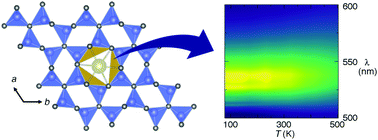
J. Mater. Chem. C, 2017,5, 10039-10046
https://doi.org/10.1039/C7TC03039H
Swellable functional hypercrosslinked polymer networks for the uptake of chemical warfare agents
Porous materials can be used as sorbents for the bulk uptake (and potential deactivation) of chemical warfare agents (CWAs).
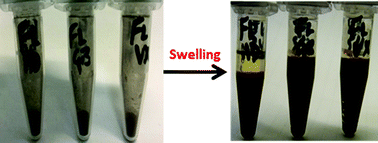
Polym. Chem., 2017,8, 1914-1922
https://doi.org/10.1039/C7PY00040E
CH3NH3PbI3 films prepared by combining 1- and 2-step deposition: how crystal growth conditions affect properties
The growth of CH3NH3PbI3 films is transformed using a new combined one-step and two-step deposition method which results in controlled morphology and property changes.
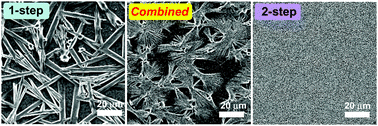
Phys. Chem. Chem. Phys., 2017,19, 7204-7214
https://doi.org/10.1039/C7CP00471K
Hot injection thermolysis of heterometallic pivalate clusters for the synthesis of monodisperse zinc and nickel ferrite nanoparticles
The heterometallic pivalate clusters have been used as single source precursors to synthesise zinc ferrite or nickel ferrite nanoparticles. The different reaction parameters, magnetic properties and XMCD were studied.
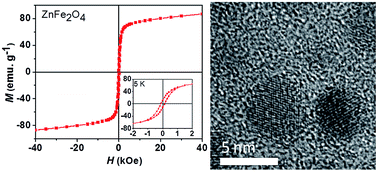
J. Mater. Chem. C, 2014,2, 6781-6789
https://doi.org/10.1039/C4TC00832D
Large pore raspberry textured phosphonate@silica nanoparticles for protein immobilization
Synthesis and characterization of large pore raspberry textured phosphonate@silica nanoparticles that are readily internalized by HeLa cells and form stable BSA@particle dispersions with high BSA load and retention of native protein structure at pH 7.4.
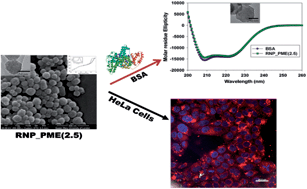
J. Mater. Chem. B, 2014,2, 903-914
https://doi.org/10.1039/C3TB21263G
Enhanced visible-light-driven photocatalytic activity of mesoporous TiO2−xNx derived from the ethylenediamine-based complex
The as-formed ethylenediamine–titanium butoxide complex was employed to synthesize mesoporous TiO2−xNx with enhanced visible-light-responsive photocatalytic activity owing to its developed mesoporosity and reduced oxygen vacancies.
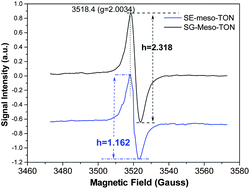
Nanoscale, 2013,5, 5396-5402
https://doi.org/10.1039/C3NR00344B
Electronic and surface properties of PbS nanoparticles exhibiting efficient multiple exciton generation
Ultrafast transient absorption and photoemission measurements have been used to study multiple exciton generation and measure the electronic and surface properties of PbS nanoparticles.
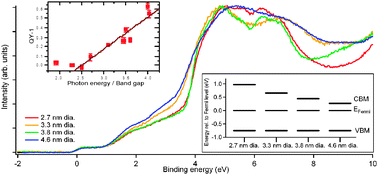
Phys. Chem. Chem. Phys., 2011,13, 20275-20283
https://doi.org/10.1039/C1CP22330E
Supported ionic liquid silica nanoparticles (SILnPs) as an efficient and recyclable heterogeneous catalyst for the dehydration of fructose to 5-hydroxymethylfurfural
SILnPs showed 99.9% fructose conversion with 63.0% HMF yield in the dehydration of fructose; and were very easily and efficiently recycled over seven cycles.
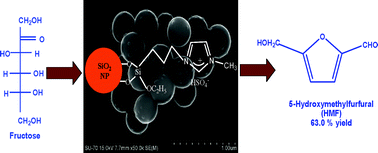
Green Chem., 2011,13, 340-349
https://doi.org/10.1039/C0GC00690D
Catalysis by microporous phthalocyanine and porphyrin network polymers
Phthalocyanines and porphyrins incorporated into microporous network polymers show greatly enhanced activity as heterogeneous catalysts when compared to low molar mass analogues.
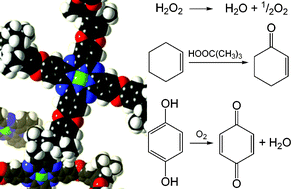
J. Mater. Chem., 2008,18, 573-578
https://doi.org/10.1039/B715660J
Developing environmentally benign routes for semiconductor synthesis: improved approaches to the solution deposition of cadmium sulfide for solar cell applications
Green Chem., 2000,2, 79-86
https://doi.org/10.1039/A909257I
A novel metalorganic route for the direct and rapid synthesis of monodispersed quantum dots of indium phosphide
Preparation of zinc oxide and zinc sulfide powders by controlled precipitation from aqueous solution
Low temperature electrochemistry of chromium porphyrins: characterization of transient species
Reactivity of co-ordination compounds in the solid state. Part 1. Mixed-ligand complexes of oxalate and 2,2′-bipyridlyl with copper(II), their preparation, interconversion, and novel solid-state reactivity
About this collection
After studying at the Universities of Liverpool (first degree) and Cardiff (PhD), Paul O’Brien FRS began his teaching career and research at Chelsea College. He enjoyed further academic posts in London at Queen Mary and Westfield College and Imperial College before moving to the University of Manchester where he spent the rest of his professional life. Over these years, and through numerous national and international collaborations and duties, he touched the hearts and minds of thousands of people. He did this in many guises - as a friend, a colleague, a mentor, a facilitator, a role model and a leader. Without a doubt, Paul inspired and helped to shape the careers of many practising researchers who now have established posts in academia and industry. This collection is a celebration of Paul’s achievements, of his own research with over 700 papers and numerous awards and Fellowships, but also for his passion to help others reach their potential and promote excellent and exciting science. This collection contains papers from friends and colleagues who wish to pay him respect and gratitude through a medium that Paul would have appreciated – through science.
Peter Skabara, University of Glasgow
Richard Winpenny, University of Manchester
Stephen Faulkner, University of Oxford